Azerbaijan Flag Meaning
Three horizontal stripes of blue, red, and green with a white crescent and eight-pointed star in the center, representing Turkic heritage, modernity and progress, Islamic tradition, and the eight branches of the Turkic peoples, designed during the brief independence period of 1918-1920.
- Continent
- Asia
- Adopted
- 1991
- Ratio
- 1:2
- Colors
- blue, red, green, white
- Designer
- Ali bey Huseynzade
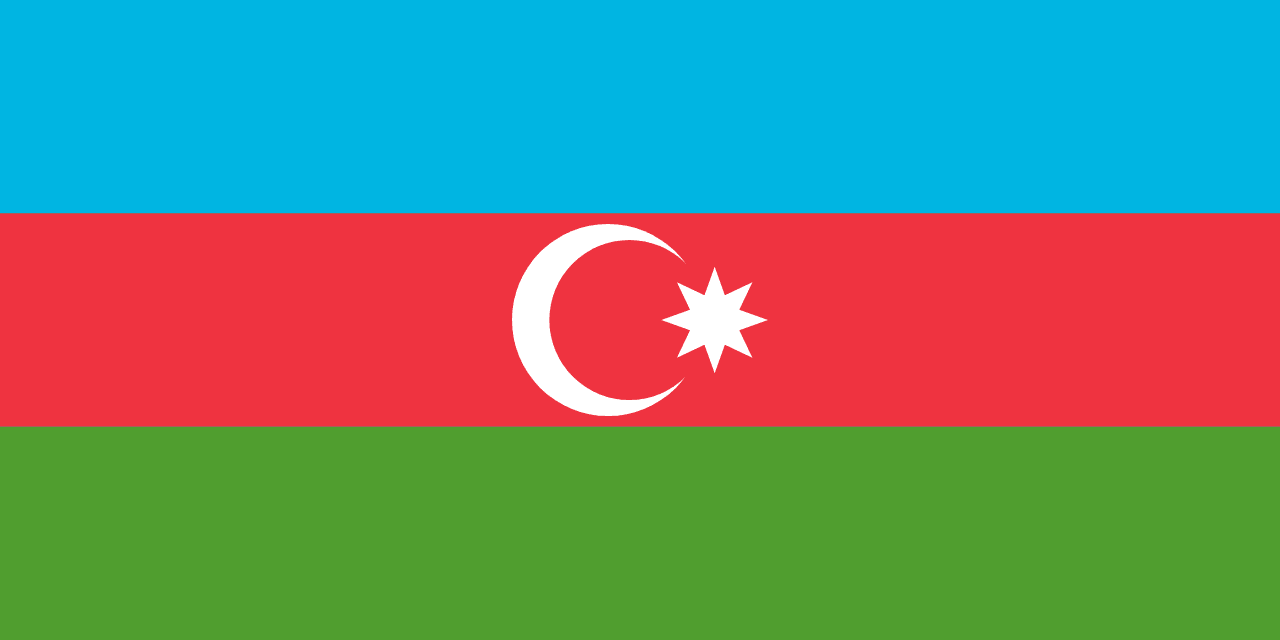
Symbolism
Blue Stripe: Represents the Turkic heritage of Azerbaijan and its connection to the broader Turkic world, symbolizing the ancient traditions and ethnic identity that link Azerbaijanis to Central Asian and Anatolian peoples.
Red Stripe: Represents modernity, progress, and the development of democracy in Azerbaijan, symbolizing the forward-looking aspirations of the Azerbaijani people and their desire for advancement and prosperity.
Green Stripe: Represents the Islamic religion practiced by the majority of Azerbaijanis, symbolizing the spiritual foundation of the nation and the connection to the broader Islamic world and traditions.
White Crescent and Star: The crescent represents Islam while the eight-pointed star represents the eight branches of the Turkic peoples and the eight letters in 'Azerbaijan' when written in Arabic script, symbolizing unity and cultural identity.
History
- Ancient-Medieval Period: The region was influenced by Persian empires, Arab conquest brought Islam in the 7th century, and various Turkic dynasties established rule, creating the complex cultural synthesis that defines modern Azerbaijan.
- 16th-18th Century: Azerbaijan was divided between the Ottoman and Persian empires, with the Safavid dynasty making the region a center of Shia Islam while Turkic culture and language remained dominant among the population.
- 1813-1828: The treaties of Gulistan and Turkmenchay divided Azerbaijan between the Russian and Persian empires, with northern Azerbaijan falling under Russian control and beginning the modern territorial division.
- 1870s-1917: The discovery of oil in Baku made Azerbaijan one of the world's major petroleum producers, bringing rapid industrialization, foreign investment, and the growth of a wealthy merchant class.
- May 28, 1918: The Azerbaijan Democratic Republic was established as one of the first secular democratic republics in the Muslim world, adopting the current flag design and introducing progressive reforms including women's suffrage.
- April 1920: Soviet forces occupied Azerbaijan, ending the short-lived independence and incorporating the country into the Soviet Union as the Azerbaijan Soviet Socialist Republic.
- 1920-1991: Soviet rule brought industrialization, urbanization, and education but also suppressed national identity, forced collectivization, and imposed Russian cultural influence while developing oil resources.
- 1988-1994: The Nagorno-Karabakh conflict began as ethnic Armenians sought to join Armenia, leading to war that displaced over one million people and resulted in Armenian occupation of 20% of Azerbaijan's territory.
- August 30, 1991: Azerbaijan declared independence from the Soviet Union, readopting the 1918 flag and beginning the transition to a market economy under President Ayaz Mutalibov.
- 1993-2003: Heydar Aliyev came to power and stabilized the country, signing major oil contracts with international companies and establishing the foundation for the modern Azerbaijani state.
- 2003-2024: Ilham Aliyev succeeded his father as president, using oil revenues to modernize infrastructure while consolidating authoritarian rule and limiting political opposition and civil society.
- September-November 2020: The Second Nagorno-Karabakh War saw Azerbaijan reclaim much of its occupied territory with Turkish support, ending with a Russian-brokered ceasefire and significant geopolitical realignment in the Caucasus.
Trivia
- Azerbaijan is known as the 'Land of Fire' due to its natural gas flames that burn continuously from the earth, inspiring ancient Zoroastrian fire worship and giving the country its distinctive nickname.
- The flag represents a country that was the world's first oil-producing region, with hand-dug wells dating back over 1,000 years and Baku becoming a major petroleum center by the 1870s.
- Azerbaijan is one of the few countries where Shia Islam is the majority religion (about 85%), though the society remains largely secular due to Soviet influence and Turkic cultural traditions.
- The country spans both Europe and Asia, with the Greater Caucasus mountain range forming a natural boundary and creating diverse landscapes from Caspian coastal plains to high mountain peaks.
- Azerbaijani (or Azeri) belongs to the Turkic language family and is closely related to Turkish, allowing for significant cultural and linguistic ties with Turkey and Central Asian nations.
- The flag flies over a country rich in caviar production from the Caspian Sea, where Azerbaijani sturgeon farming helps sustain this luxury food industry despite overfishing concerns.
- Baku's Old City (Icherisheher) is a UNESCO World Heritage site containing medieval architecture, including the iconic Maiden Tower that has become a symbol of the capital.
- Azerbaijan has achieved significant economic growth due to oil and gas exports, transforming Baku into a modern city with futuristic architecture like the Flame Towers skyscrapers.
- Traditional Azerbaijani music includes mugham, a complex form of folk music that UNESCO recognizes as a Masterpiece of Oral and Intangible Heritage of Humanity.
- The country practices a unique form of wrestling called kurash and is famous for its strong chess tradition, producing world-class players and hosting major international tournaments.
- Azerbaijani cuisine blends Turkish, Persian, and Russian influences, with dishes like plov (pilaf), kebabs, and dovga (yogurt soup) reflecting the country's diverse cultural heritage.
- The flag represents a country that has successfully diversified its economy beyond oil, developing agriculture, tourism, and technology sectors while maintaining energy dominance.
- Azerbaijan hosted the Eurovision Song Contest in 2012 and has invested heavily in sports infrastructure, including Formula 1 racing and hosting major international football tournaments.
- The country has complex relationships with its neighbors, maintaining close ties with Turkey and Israel while having tense relations with Armenia and Iran due to various historical and political factors.
- Despite authoritarian governance, Azerbaijan has maintained relative stability in a volatile region and has become an important energy supplier to Europe through various pipeline projects.
Related Countries
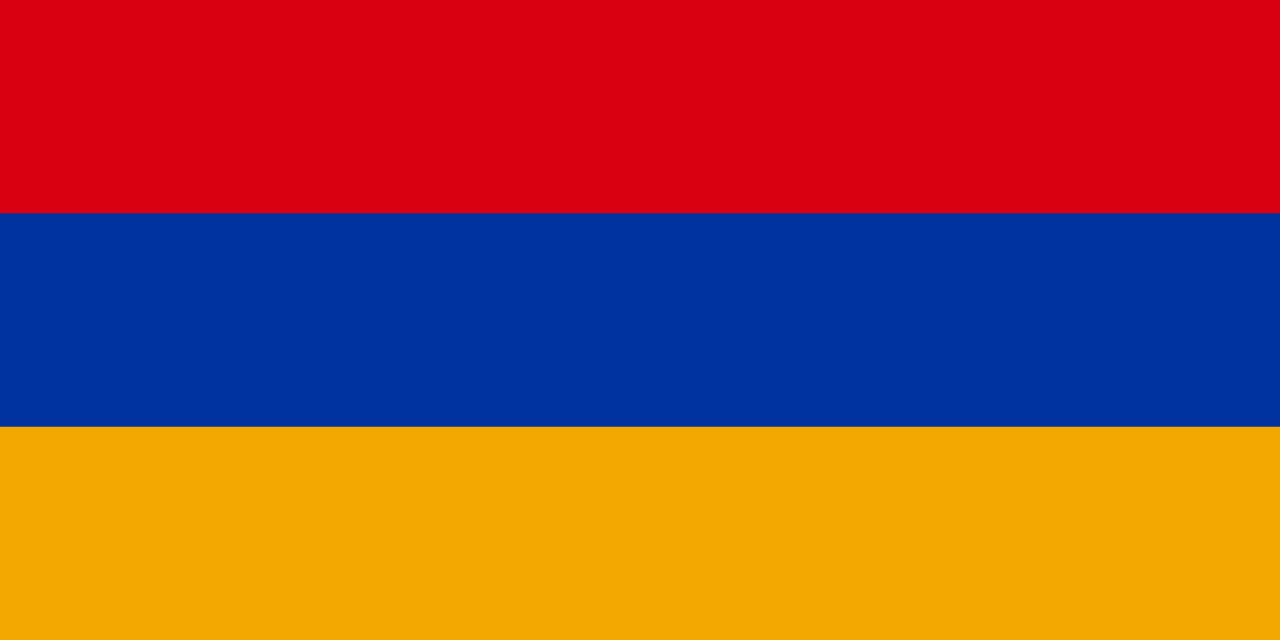
Armenia
Asia
Three horizontal stripes of red, blue, and orange (apricot), representing the blood shed for independence, the Armenian sky and hope for peace, and the fertile land and hardworking nature of the Armenian people, based on the flag of the First Republic of Armenia (1918-1920).

Georgia
Asia
A white field with a large red Saint George's cross extending to the edges and four smaller red Bolnisi crosses in each quadrant, representing Georgia's ancient Christian heritage and the five wounds of Christ.
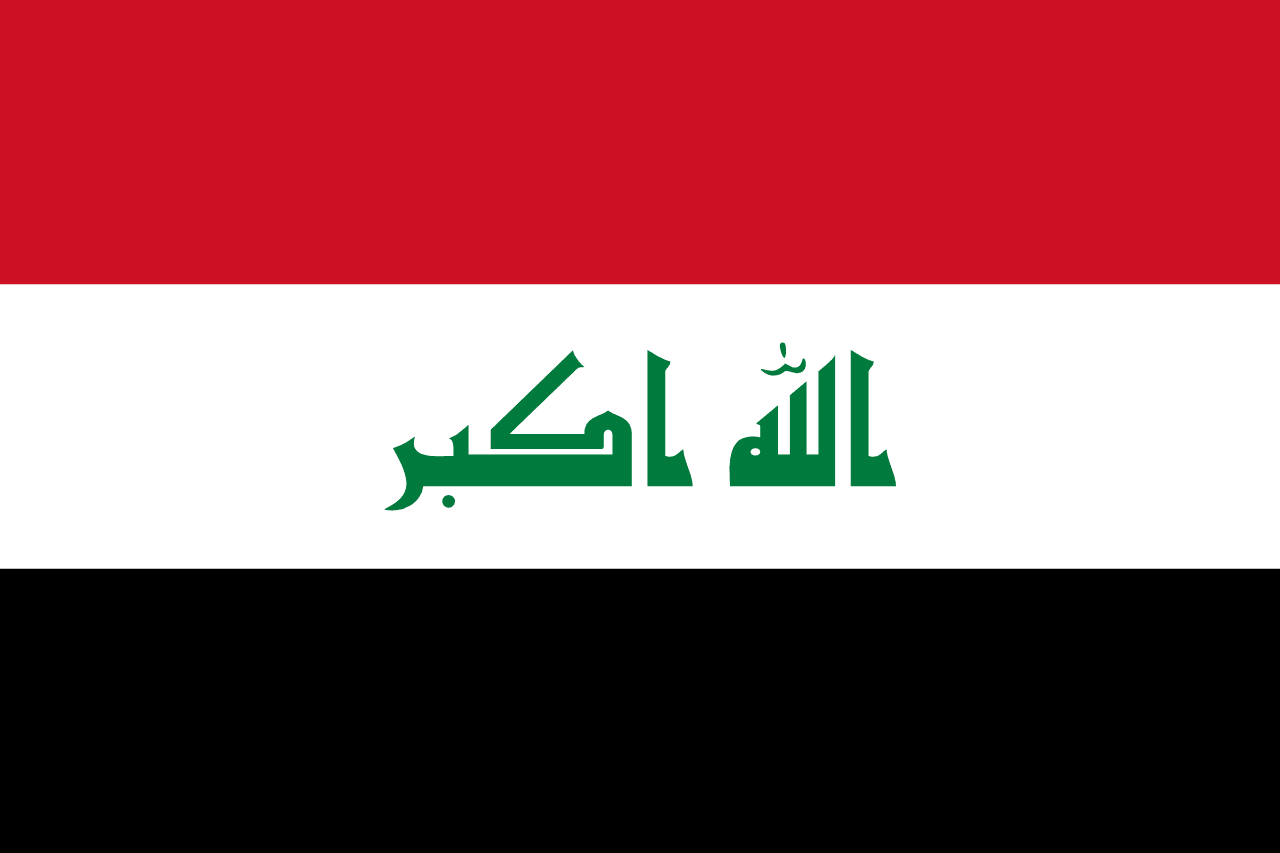
Iraq
Asia
Three horizontal stripes of red, white, and black (Pan-Arab colors) with 'Allahu Akbar' (God is Greatest) written in green Arabic Kufic script across the white stripe, representing Arab unity, Islamic faith, and Iraqi sovereignty.
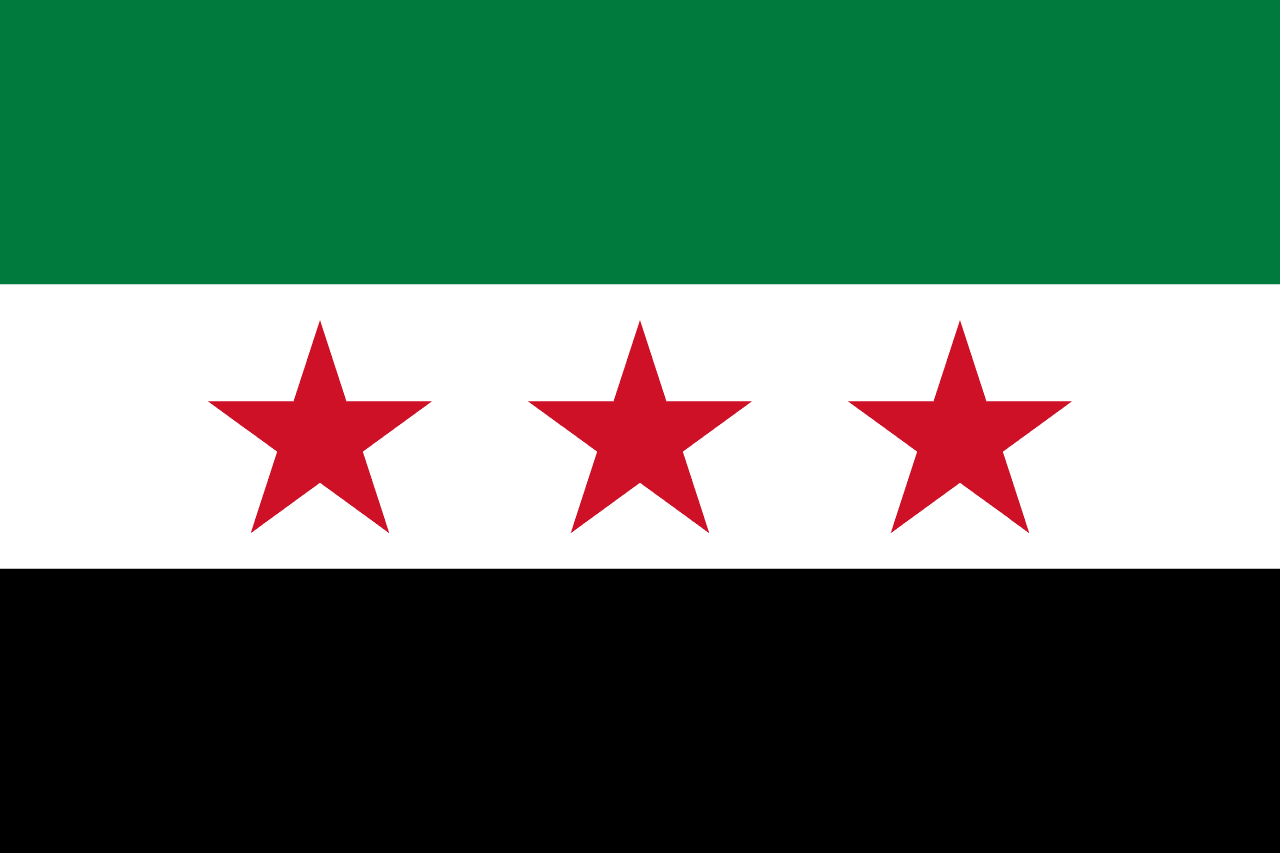
Syria
Asia
Three horizontal stripes of red, white, and black with two green five-pointed stars on the white stripe, representing the Pan-Arab colors of liberation struggles, the Hashemite flag heritage, and the Ba'ath Party's Arab socialist ideology that has governed Syria since 1963.
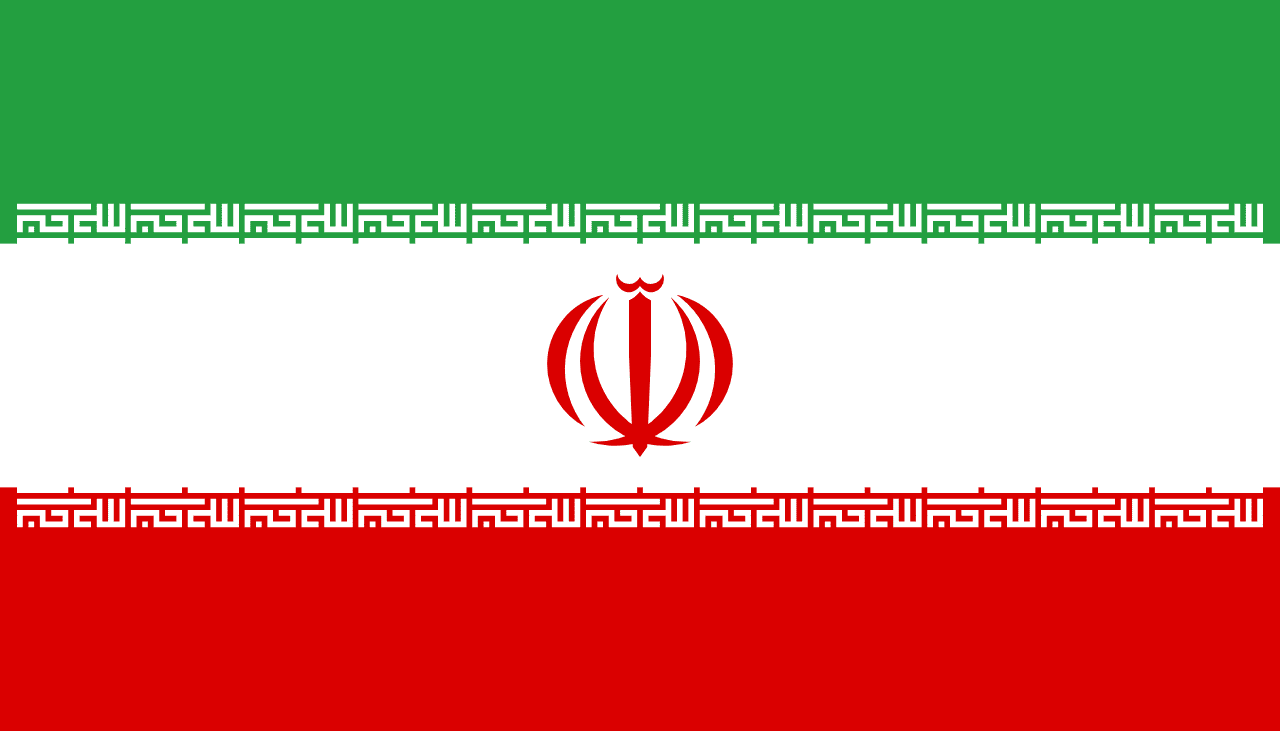
Iran
Asia
Three horizontal stripes of green, white, and red with a stylized emblem in the center and repeated 'Allahu Akbar' text along the borders, representing the Islamic Republic of Iran and the principles of the 1979 Islamic Revolution.
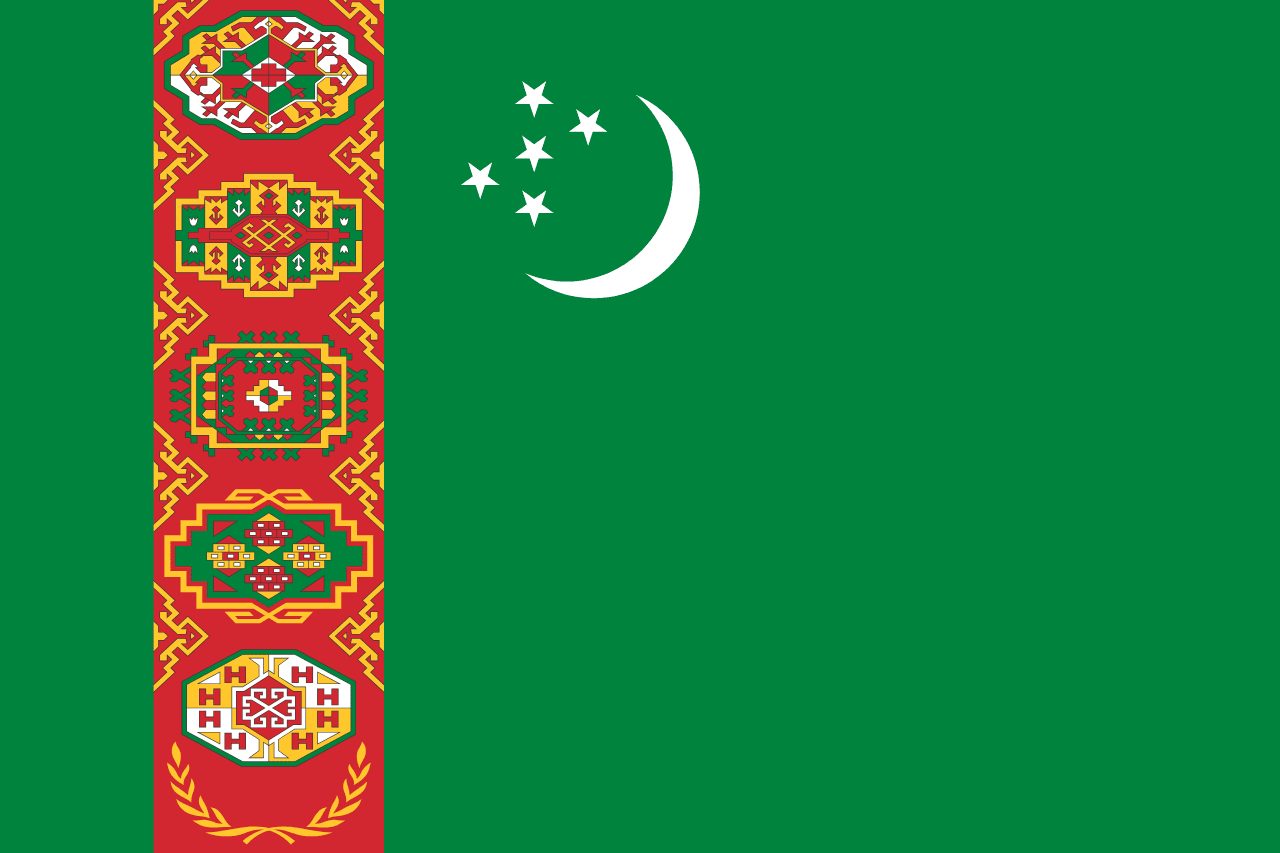
Turkmenistan
Asia
A green field with a vertical red stripe containing five traditional carpet guls (patterns) on the hoist side, and a white crescent moon with five stars in the upper left, representing Islam, the traditional carpet weaving culture, neutrality, and the five regions and senses of Turkmenistan.